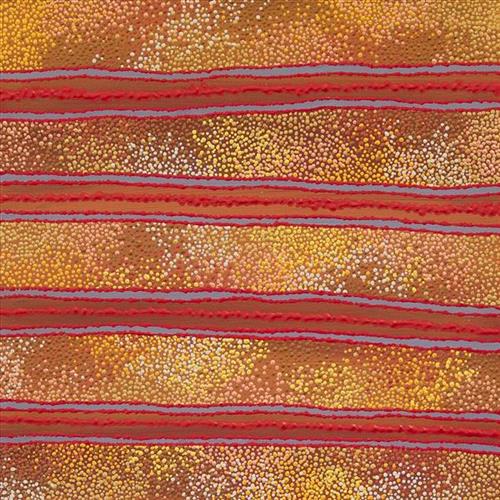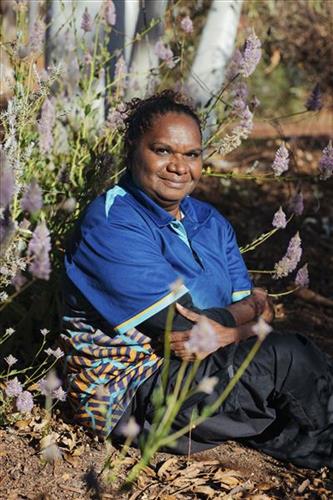111582397518
Kulyakartu
“Kulyakartu is where my Taylor family come from. My grandmother Nyunkunyal (Angelina) Taylor was born there. My Nana grew up there up until she was about 8 or 10 years old. My Nana and her sister Managabayi got mixed up with another tribe then ended up living with the Mangala and Juwaliny people, they are neighbours of the Yulparrija (Ngangatjarra) people painting Kulyakartu brings back memories of my grandmother and her sisters, Managabayi, Mida and Tuulul.”
– Nuriah Jadai
The Martu term for family, walytja, encapsulates a broader idea of relatedness that permeates every aspect of life. The Martu four-section kinship system determines a person as belonging to either the Purungu, Milangka, Panaka or Karrimarra skin group, and was created by the Jukurrpa (Dreaming) ancestors.
Walytja groups had rights to their ngurra (home Country, camp) as inherited over generations. Also passed down over generations was the intimate knowledge of the physical and cultural properties of one’s Country, and the responsibility to care for and nurture one’s ngurra. The passing of rights and responsibilities through walytja in relation to specific lands continues today.
This painting depicts Kulyakartu, part of Nuriah’s ngurra (home Country, camp). Kulyakartu is located in the far north of the Martu homelands, near the Percival Lakes region of Western Australia’s Great Sandy Desert. Kulyakartu is mostly grass Country where there is very good hunting. In particular parnajarrpa (goanna), wild cats, and lunki (witchetty grub) are found in abundance here. There is no permanent water source in Kulyakartu, so Nuriah’s family would walk here annually following the wantajarra (wet season). During the yalijarra (hot, dry season) they would head south again to more permanent water.




